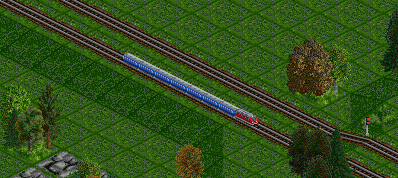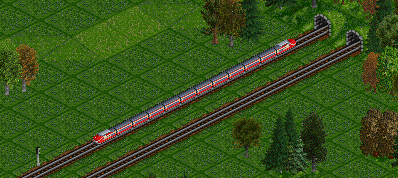In the early 1930s a new long-distance coach becomes available, replacing the pike and skirt types of the 1920s. This type is based on a variety of real world types which were produced in different series over 30 years. They are shortly described in the next sections. All these coaches are quite similar, with differences only experts will spot. Basically, they are all four-axle coaches with a length of 26.4m.
UIC-X-Wagen (German wikipedia)
These coaches, also known as m-coachaes, formed the base for long-distance travel with the Bundesbahn post-World War II. More then 6000 units in different configurations (first, second and third class, dining cars, baggage cars, ...) were built. At that time, UIC had not yet standardized such coaches, that was only done in the early 1960s.
The coaches soon replaced all pre-war types especially from the higher-class services. Many were later modernized several times, still being run with the Intercity trains of the 1970s, even though they lacked air condition. In the 1980s they were phased out of those trains, with many being reconfigured for Interregio services, receiving a totally new interior. They were in active duty until after the millennium.
VT-11 Mittelwagen (German wikipedia)
The coaches for the TEE DMU VT-11 were custom designs which differed from regular long distance coaches. They are mentioned here because they are built by adding regular long-distance coaches to the VT-11, which causes an automated conversion.
Rheingold-Wagen (German wikipedia)
Based on the UIC-x-coaches lots of different coach types were derived. The premium-class "Rheingold" train required first class coaches, as well as dining cars and the iconic observation car with the characteristic dome. They were introduced in 1962 with the exclusive Rheingold express trains, which was changed into a TEE in 1965, which caused a change in livery.
In the 1970s further coaches were bought. They were built based on a common collaborative design from multiple European railways to have common rolling stock for international trains. The Bundesbahn used coaches in TEE colors, all of which were first class only and had air conditioning. In later years the coaches were upgraded with air pressure sealing to allow usage on high-speed tracks.
With the introduction of the IC '79 services with first and second class, the Bundesbahn needed additional coaches for the second class. The older UIC-x-coaches had been in service for some 20 years by then and lacked air conditioning. This resulted in the open coaches of class Bpmz. In the early 1980s more than 500 units were built, most of which were later improved to be pressure-tight.
Characteristics
|
|
passenger coach |
| available by | 1950 / 1974 |
|---|---|
| capacity | 56 |
| loading speed | 8 |
| speed limit | 160 kph |
|
|
mail coach |
| available by | 1950 / 1974 |
|---|---|
| capacity | 36 |
| loading speed | 9 |
| speed limit | 160 kph |
|
|
dining car |
| available by | 1950 |
|---|---|
| capacity | 56 |
| loading speed | 10 |
| speed limit | 160 kph |
|
|
passenger coach / mail coach |
| available by | 1950 |
|---|---|
| capacity | 63 / 40 |
| loading speed | 8 |
| speed limit | - |
| remarks | "F"-train: Long distance express |
|
|
passenger coach / mail coach |
| available by | 1957 |
|---|---|
| capacity | 56 / 36 |
| loading speed | 8 / 9 |
| speed limit | - |
| remarks | TEE, only VT-11 |
|
|
passenger coach / mail coach |
| available by | 1960 |
|---|---|
| capacity | 56 / 36 |
| loading speed | 8 / 9 |
| speed limit | - |
| remarks | Rheingold, only class 110 |
|
|
dining car / observation car |
| available by | 1960 |
|---|---|
| capacity | 56 |
| loading speed | 7 |
| speed limit | - |
| remarks | Rheingold, only class 110 |
|
|
passenger coach / mail coach |
| available by | 1968 |
|---|---|
| capacity | 56 / 36 |
| loading speed | 8 / 9 |
| speed limit | - |
| remarks | TEE |
|
|
dining car / observation car |
| available by | 1968 |
|---|---|
| capacity | 56 |
| loading speed | 7 |
| speed limit | - |
| remarks | TEE |
|
|
dining car |
| available by | 1971 |
|---|---|
| capacity | 56 |
| loading speed | 7 |
| speed limit | - |
| remarks | TEE |
Images and screenshots
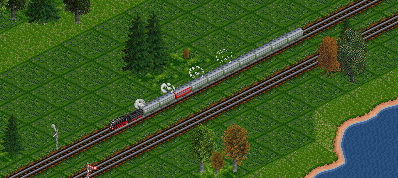
A fast train with class 01 in the early 1950s, showing UIC-x-wagons and a dining car.
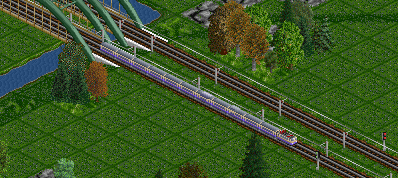
The Rheingold in about 1963 with the short-lived livery, which was replaced by TEE-colors in 1965.
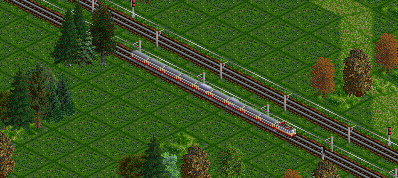
A class 110 with the upgraded TEE, created out of the Rheingold. Note the special cars in third and fifth position.
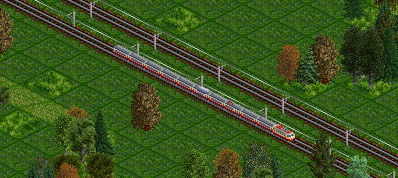
The class 103 with an Intercity in TEE-colors. The observation car is still in service, the dining car from the 1960s has been replaced by a different type, visible by the pantograph.
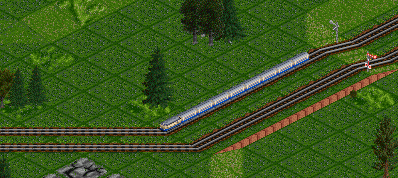
A class 218 with a fast train in typical Bundesbahn livery of ivory/blue of the late 1970s.
Usage
The long distance coaches will naturally be used for fast passenger services. They have a higher capacity compared to the local coaches, but take longer to load and unload. This should not be a huge issue, as long-distance trains typically do not stop every other minute.

